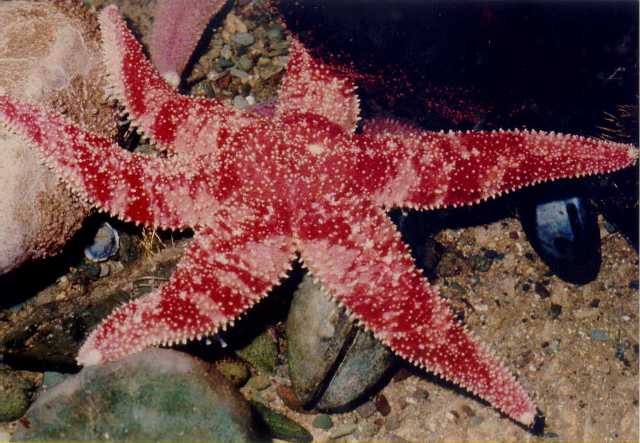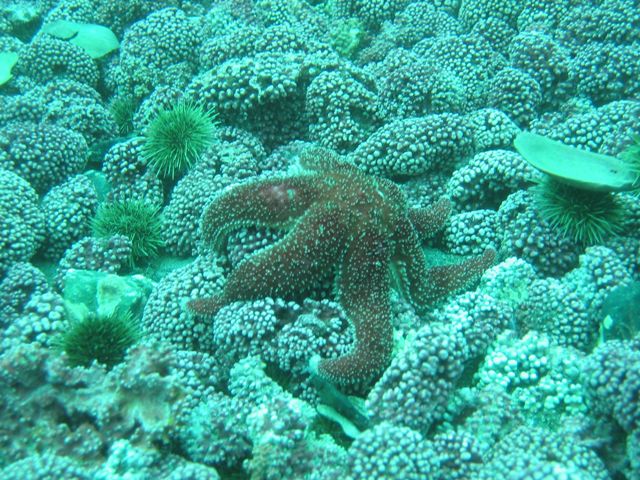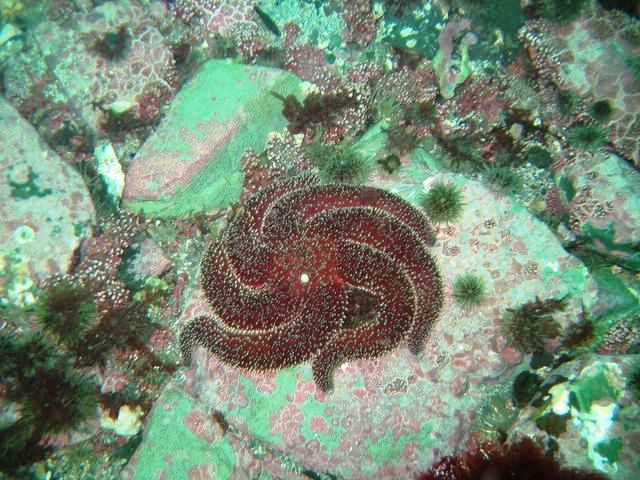Polar Sea Star

Scientific name: Leptasterias polaris
Phylum: Echinodermata
Class: Asteroidea
Description: The Polar Sea star has six arms with four rows of tube feet on each. Its skin is covered in tiny pincer-like pedicellaria, scattered or in clusters. It is reddish in color, and has a diameter of approximately 25cm.
Distribution: Polar Sea stars can tolerate low salinity, brackish water. They are common in rocky tide pools and near jetties and pilings but also occur on sandy or stony bottom. Though normally benthic, they can free float and drift on strong currents. It is common in North Atlantic and Canadian Arctic regions down to the Gulf of St. Lawrence.
Locomotion: They use “tube feet” which are connected to ampullae to move. When ampullae contract, fluid is forced into the tube feet, extending them; small muscles direct the tube feet in one direction or another. Sea stars migrate to deeper water in winter. An active individual could travel a mile in about a week.
Food gathering: This sea star is an active predator of bivalves such as mussels and clams.
Gas exchange: Gas exchange occurs across the podia and special out-pocketing of body wall. The currents move in opposite directions, creating a countercurrent and maximizing exchanges gradients.
Reproduction: The sexes are separated, with eggs being fertilized externally. Polar Sea stars brood their eggs and there is no pelagic larval stage. They are capable of regenerating lost or damaged arms.
Interesting facts: Sea stars are menace on oyster beds, scallop and mussel aquaculture. Polar Sea stars are active hunters. In predation studies with welks, the Polar Sea star hunted its prey “down-current” so that the welk could not detect it, much like lion will attack its prey, down-wind.
Images
 |
 |
 |
OSC Research
Mercier Lab - Research on reproduction, larval development, ecology and growth is carried out on a wide variety of marine invertebrates in this lab.